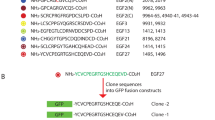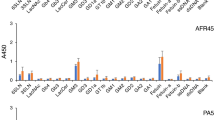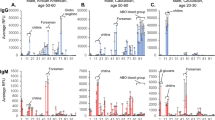Abstract
THE antibody response to most antigens is chemically heterogeneous, reflecting clonal heterogeneity of the responding cells. This heterogeneity may arise in part from the number of different epitopes present in the structure of complex antigens, although the antibody response even to chemically simple haptens (which may contain more than one epitope) is often very heterogeneous. For example, the dinitrophenyl hapten on a protein carrier elicits many different anti-hapten antibodies which are distinguished by isoelectric focusing1. Also, individual mice respond to the p-azobenzoate and to the p-azophenylarsonate haptens by producing a population of serum antibodies with many idiotypic specificities2. Certain carbohydrate antigens, however, seem to induce relatively homogeneous antibody responses3,4. One of these antigens, the C-polysaccharide from the rough strain of pneumococcus R36A, induces a restricted antibody response directed against phosphorylcholine5, a structural component of the C-polysaccharide6.
This is a preview of subscription content, access via your institution
Access options
Subscribe to this journal
Receive 51 print issues and online access
$199.00 per year
only $3.90 per issue
Buy this article
- Purchase on Springer Link
- Instant access to full article PDF
Prices may be subject to local taxes which are calculated during checkout
Similar content being viewed by others
References
Williamson, A. R., Eur. J. Immun., 1, 390 (1971).
Hart, D. A., Wang, A. I., Pawlak, L., and Nisonoff, A., J. exp. Med., 135, 1293 (1972).
Eichmann, K., Eur. J. Immun., 2, 301 (1972).
Briles, D. E., and Krause, R. M., J. Immun., 109, 1311 (1972).
Cosenza, H., and Köhler, H., Science, N.Y., 176, 1027 (1972).
Tomasz, A., Science, 157, 694 (1968).
Chesebro, B., and Metzger, H., Biochemistry, 11, 766 (1972).
Cosenza, H., and Nordin, A. A., J. Immun., 104, 976 (1970).
Rittenberg, M. B., and Pratt, Proc. Soc. exp. Biol. Med., 132, 572 (1969).
Potter, M., and Libermann, R., J. exp. Med., 132, 737 (1970).
Cosenza, H., and Köhler, H., Proc. natn. Acad. Sci., U.S.A., 69, 2701 (1972).
Askonas, B. A., and Williamson, A. R., Nature, 238, 339 (1972).
Hart, D. A., Pawlak, L., and Nisonoff, A., Eur. J. Immun., 3, 44 (1973).
Author information
Authors and Affiliations
Rights and permissions
About this article
Cite this article
LEE, W., COSENZA, H. & KÖHLER, H. Clonal Restriction of the Immune Response to Phosphorylcholine. Nature 247, 55–57 (1974). https://doi.org/10.1038/247055a0
Received:
Issue Date:
DOI: https://doi.org/10.1038/247055a0
This article is cited by
-
The 1F7 idiotype is selectively expressed on CD5+ B cells and elevated in chronic hepatitis C virus infection
Immunology & Cell Biology (2009)
Comments
By submitting a comment you agree to abide by our Terms and Community Guidelines. If you find something abusive or that does not comply with our terms or guidelines please flag it as inappropriate.



